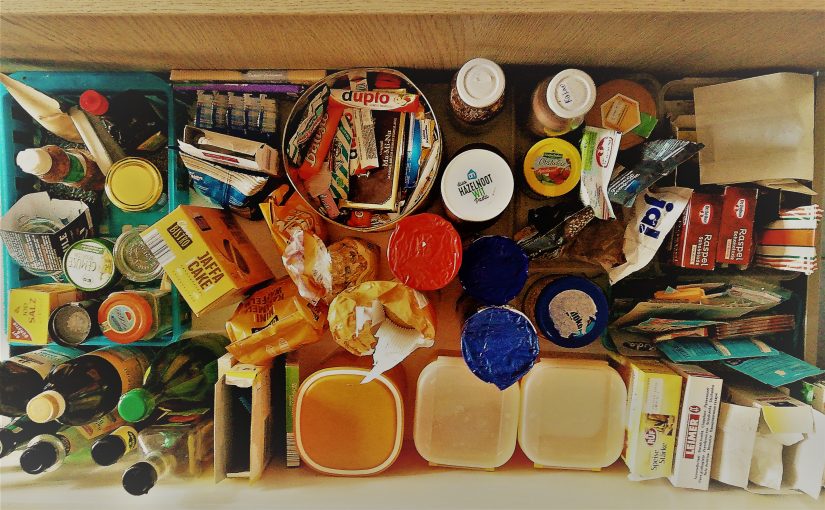Once again, the new semester is approaching, and another knowledge management course is about to start at TH Köln’s Master of Conference Interpreting. Now after 15 years of teaching, I find myself wondering what it is that I really really want my students to remember for the rest of their professional lives. Things have changed so much since I wrote my first seminar paper on terminology management back in 1995. But there certainly are some basic principles that apply no matter which tools and devices we use?
Interestingly, I happened to come across the answer this morning when I opened my kitchen drawer (or rather, I knew the answer all along, but I found it confirmed there): It is all about sorting and filtering. No matter if it’s about kitchen stuff or glossaries, what I really want my students to remember is how convenient (and sometimes life-saving, so to say) it is to have your stuff in the right place. The rules are simple:
- Group by function: All the baking/salad etc. ingredients in one place, all the sweets together, all the loose stuff in a box
- Group by type: All the Prinzenrollen next to each other (so you don’t buy the fifth one just because your kids keep telling you they are out of stock)
- Sort by date: First in First out, for obvious reasons
- Keep a shopping list and note down that you need to buy oil before you run out.
- Keep the things you use every day on the counter, so you always have them ready. Put them back into the drawer if you don’t really use them regularly.
Terminology-wise, things may not be one hundred percent identical, but the underlying principles are fairly similar:
- Categorise by customer and subject so that you get the right terms for your dermatology congress or the circulation pump manufacturer with just a few clicks.
- Sort your terminology alphabetically from time to time to find similar or double entries. This can also be a very enlightening exercise as you sometimes find you translate the same term completely differently in different settings.
- Sorting by date puts the relevance of your terminology into perspective and helps to avoid using obsolete expressions (especially when you are of a certain age).
- Make sure you highlight missing terms and discuss them with your colleague or client before you switch on the microphone.
- Assign priorities to the most crucial expressions and display them prominently so that you don’t have to look for them (rummage in the drawer) when in need.
I suppose there are even more similarities that I am not aware of. Suggestions – especially in terms of kitchen organisation – are more than welcome 🙂
About the author
Anja Rütten is a freelance conference interpreter for German (A), Spanish (B), English (C), and French (C) based in Düsseldorf, Germany. She has specialised in knowledge management since the mid-1990s.

Leave a Reply